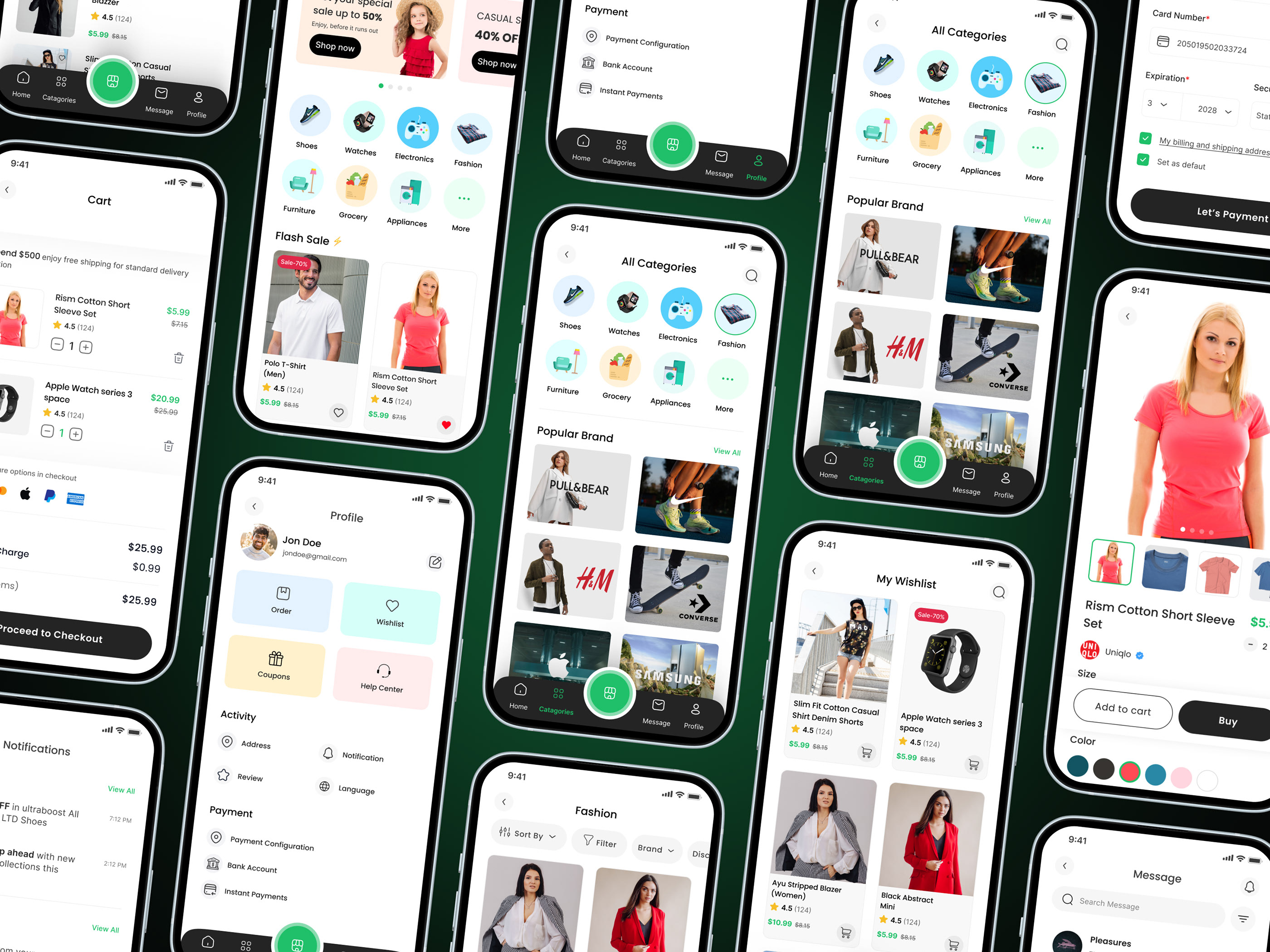Online E-commerce Shop Mobile App UI Design
In the ever-evolving landscape of online e-commerce, a seamless and intuitive mobile app UI design is essential for capturing and retaining customer interest. The rise of mobile shopping underscores the necessity of a user-friendly interface that enhances the shopping experience, driving higher conversion rates and fostering customer loyalty. In this comprehensive guide, we delve into the critical elements of designing an effective e-commerce mobile app UI that stands out in the competitive market.
Understanding User Needs and Behavior
User-Centric Design
At the core of successful mobile app UI design is a deep understanding of user needs and behaviors. User-centric design focuses on creating interfaces that are intuitive, responsive, and tailored to the preferences of the target audience. By conducting thorough user research, we can identify pain points and preferences, ensuring that the design aligns with user expectations.
Personalization
Personalization plays a pivotal role in enhancing user experience. By leveraging data analytics and machine learning, we can offer personalized recommendations, customized interfaces, and targeted promotions. This not only improves user satisfaction but also boosts engagement and conversion rates.
Essential Features of an E-commerce Mobile App
Seamless Navigation
Seamless navigation is crucial for providing a frictionless shopping experience. A well-structured navigation system allows users to effortlessly browse through categories, filter products, and find what they are looking for. Incorporating features such as a sticky menu, breadcrumb trails, and an intuitive search bar can significantly enhance navigation.
Responsive Design
Given the variety of devices and screen sizes, a responsive design is indispensable. The UI should adapt seamlessly to different screen sizes and orientations, ensuring a consistent experience across all devices. This adaptability not only improves usability but also positively impacts SEO rankings.
High-Quality Visuals
High-quality visuals are a cornerstone of engaging e-commerce app design. Crisp product images, videos, and 360-degree views provide users with a clear understanding of the products. Additionally, employing visual hierarchy through strategic use of colors, fonts, and spacing can guide users' attention to key elements such as call-to-action buttons and promotional banners.
Optimizing Performance and Speed
Fast Loading Times
In the realm of mobile apps, speed is king. Users expect fast loading times, and any delay can lead to increased bounce rates and lost sales. Optimizing the app’s performance by minimizing the size of images, leveraging lazy loading, and using efficient coding practices is essential for maintaining a fast and responsive app.
Smooth Checkout Process
A streamlined checkout process is vital for reducing cart abandonment rates. This involves minimizing the number of steps required to complete a purchase, offering multiple payment options, and ensuring that the process is secure and user-friendly. Implementing features such as one-click checkout and auto-fill forms can significantly enhance the user experience.
Incorporating Advanced Technologies
Artificial Intelligence and Machine Learning
Integrating artificial intelligence (AI) and machine learning (ML) can elevate the user experience by providing smart recommendations, predictive search, and personalized content. AI-driven chatbots can offer instant customer support, while ML algorithms can analyze user behavior to optimize product recommendations and promotional strategies.
Augmented Reality (AR)
Augmented reality (AR) is revolutionizing the way users interact with e-commerce apps. By allowing users to visualize products in their real-world environment, AR enhances decision-making and reduces the likelihood of returns. This technology is particularly beneficial for industries such as fashion, furniture, and home decor.
Ensuring Security and Trust
Data Protection
With increasing concerns about data privacy, ensuring robust data protection measures is crucial. Implementing secure authentication methods, encrypting sensitive information, and adhering to data protection regulations such as GDPR can build user trust and confidence.
Transparent Policies
Transparent policies regarding shipping, returns, and data usage contribute to a trustworthy user experience. Clear and accessible information on these policies can alleviate user concerns and enhance the overall credibility of the app.
Continuous Improvement through Feedback
User Feedback and Analytics
Continuous improvement is key to maintaining a competitive edge. Regularly collecting user feedback through surveys, reviews, and in-app prompts provides valuable insights into user satisfaction and areas for improvement. Additionally, leveraging analytics tools to monitor user behavior and app performance can inform data-driven decisions.
Iterative Design Process
An iterative design process involves continuously refining the app based on user feedback and analytics data. By adopting an agile approach, we can implement changes quickly, test new features, and ensure that the app evolves to meet changing user needs and market trends.
















